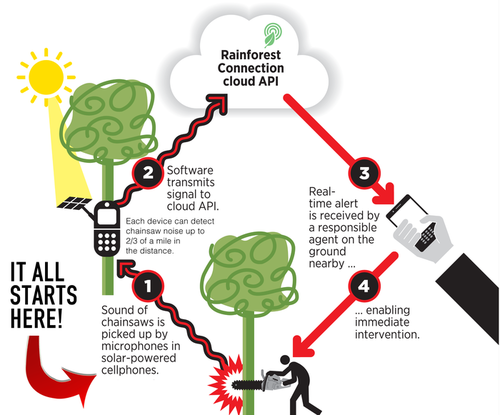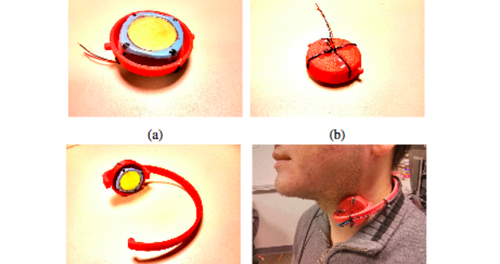SOUND RESEARCH LOG: Always On: Rainforests, Sleep Disorders, More

Nick Shchetko at blogs.wsj.com/digits surveys recent app developments related to “always on” microphones.
There’s Rainforest, a chainsaw-detection tool halfway through its Kickstarter campaign.
He also lists examples that “assess the quality of sleep, explain why a baby is crying, tell you when you’re stressed, identify mental disorder, track gunshots and even help to crowd-monitor endangered cicada species.”

And then there’s BodyBeat, prototype pictured above:
A crude prototype of BodyBeat, revealed in mid-June, uses an external custom-made microphone to track body sounds, such as breath or cough, with the ambitious aim to detect illnesses or record food consumption.
The microphone is placed on the neck with a 3D-printed neckpiece, which is plugged into a small audio processing device that is wirelessly connected to a smartphone. BodyBeat authors plan to redesign the system for better usability in commercial applications.
It may sound far-fetched. But there could be plenty of market opportunities for systems like BodyBeat. Breathing sounds are indicative of lung conditions, and data on what users consume – say, how often do they drink or eat certain products – can provide important data for diet tracking apps.
There are certainly limitations to sound-detection technology. The quality of embedded microphones remains a concern, for one. “The problem is you can’t create a robust app because everyone is using different microphones,” said Alexander Adams, who helped develop BodyBeat.
Found thanks to Alexis Madrigal’s http://ift.tt/1lPwWYp.
This entry cross-posted from the Disquiet linkblog project sound.tumblr.com.



